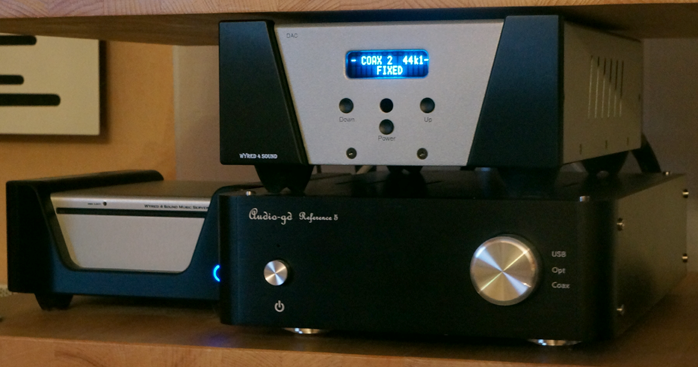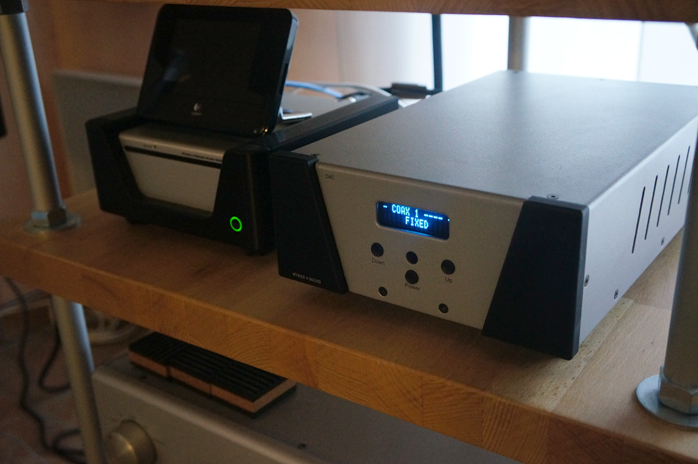This review page is supported in part by the sponsors whose ad banners are displayed below |
 |
 |
I lived with this AIFF library for a good time before erasing it again to more accurately assess the ripping skills of my loaner. The process itself is obviously child’s play and the quality of rips called for no criticisms. Yet cover art retrieval wasn’t 100%. I guesstimate that in my case 15% of rips required manual cover modifications. I don’t know whether any current device is fully enabled to harvest cover art without substantial errors. But that’s easily solved. Simply enter the artist/album name into Google or another search engine to pull up various links containing the cover. Here the important thing is not forgetting to rename that new file cover.jpg.
|
 |
I had to also edit meta data with for example Japanese or Chinese CD which were tagged in their native tongue. This is a bit more difficult to address as you will need specific tag editor software but it’s nothing really complicated in the end. I used the Tag-04 appliance which is freeware released under the GNU General Public License (GPL). It has an intuitive interface that simplifies common editing tasks while also allowing direct tag manipulation. Tags can be dragged between files or Tag-04 can even add all tags contained in one file to another in one fell swoop. Tag can also edit multiple files simultaneously, eliminating repetition and saving time.
|
 |
Comparing the Music Server’s ripping to my usual iTunes/XLD process, the Wyred4Sound device requires certainly less effort and human interaction. But XLD offers more flexibility for files types (I mainly use AIFF) where the Music Server auto rips to FLAC. But you may paste all prior iTunes files in various downloaded formats into the Music Server using the Squeezebox server functionalities for playback exploring 24/192 resolution.
|
|
|
Sound. I took time comparing the Music Server to my current sources of Jadis JD-2 drive, Squeezebox Touch and MacBook/iMac home computers with HiFace. As already indicated, I observed no substantial differences between Music Server and Squeezebox Server frames. There also was no difference disabling unused services from the Music Server GUI. As a dedicated computer source the Music Server has enough computational capacity to handle a few additional background tasks without compromising the sonic results which is not the case for the Squeezebox Touch.
|
 |
The Music Server sound will be no surprise to anyone with prior Wyred4Sound exposure. In a few words the sound has a natural liquidity and density that provides a very involving character. One core appeal that must be highlighted at this juncture is the Music Server’s utterly silent operation. If the Squeezebox Touch is completely silent, so is the Wyred4Sound. That’s not the case for my MacBook and definitely a strong point in favour of the Music Server which contains no sophisticated SSD drives. On sonic performance I found the overall results of iTunes playback on my Macbook (Lion OS and 8GB RAM) connected to various DACs through the M2Tech HiFace less pleasant and liquid than using the Music Server. Even with the iMac (Lion OS and 8GB RAM + Amarra) plugged into the same DACs, the comparison still favored the Wyred4Sound. The main difference was a more organic sound and better bass extension for the Music Server.
|
 |
At this stage I considered the difference concomitant with the respective price of each computer. It was reasonable to get better results from the more expensive dedicated Californian unit. Now I tried to compare my Squeezebox setup with the Wyred4Sound. I should say that my particular Squeezebox setup is not the cheapest. To the basic cost of the stock Squeezebox Touch must be added the €300 power supply, €150 15-meter Meicord Ethernet cable and the cost of the iMac, my external dedicated 2TB music hard drive and the RAM upgrade. In short, overall expense slightly exceeds the Wyred. I must add also that the software modifications and tweaks available at Soundcheck’s website provide significant improvement of the Logitech’s native performances but that improvement is free (thanks Klaus).
|
|
|
|
Now I expected from a dedicated independent source a certain improvement over my Squeezebox arsenal but that was not to be the case. In fact I could not have imagined more similar results. Switching from Squeezebox to the Music Server, I compared both with no less than 4 different DAC configurations and it was very difficult to make out differences between the two sources. I didn’t have opportunity to test a more ambitious power supply than the basic one Wyred provides and believe its sonic performance might have been boosted had such an option been available. Its S/PDIF and Toslink outputs offered equivalent performance to my Squeezebox setup (on which I have been working and testing the best solutions for two years) except for dynamics where the Music Server was superior. This in my opinion is a weak point of the Logitech where the Wyred demonstrated a less laid-back character.
|
 |
|
| As French distributor Julien enabled the complementary loan of a Wyred4Sound DAC2, I could explore the server’s I²S mode. From what I could observe in my system, I²S performance depends on the competing digital cable. With good S/PDIF cables’ greater jitter rejection, the difference was quite small. With inferior wires the difference was very noticeable. What did that mean? |
|
|
Perhaps that cable quality is more varied over the S/PDIF format. Wyred’s I²S cable did a good job and for a reasonable price compared to my resident digital cable panel. As Wyred’s I²S Implementation relies on their own connection convention, I did not compare their cable to a standard HDMI cable where the pin layout might differ. I did however feel that the provided 0.5-meter length was too short since the cable itself provides little flexibility. I would go directly to the 2-meter option or a one-meter should such become available.
|
 |
  |
 |